Reuben Hale’s home and garden, in the historic El Cid neighborhood of West Palm Beach, shows off the talents and inspiring life story of this beloved local artist. “Local” in the sense that he move to Florida in 1961, teaching and working here for more than 50 years; “beloved” in the sense that his students revered him, and his daughter Irma adored him and has indefatigably dedicated the past few years to preserving and acclaiming his legacy.
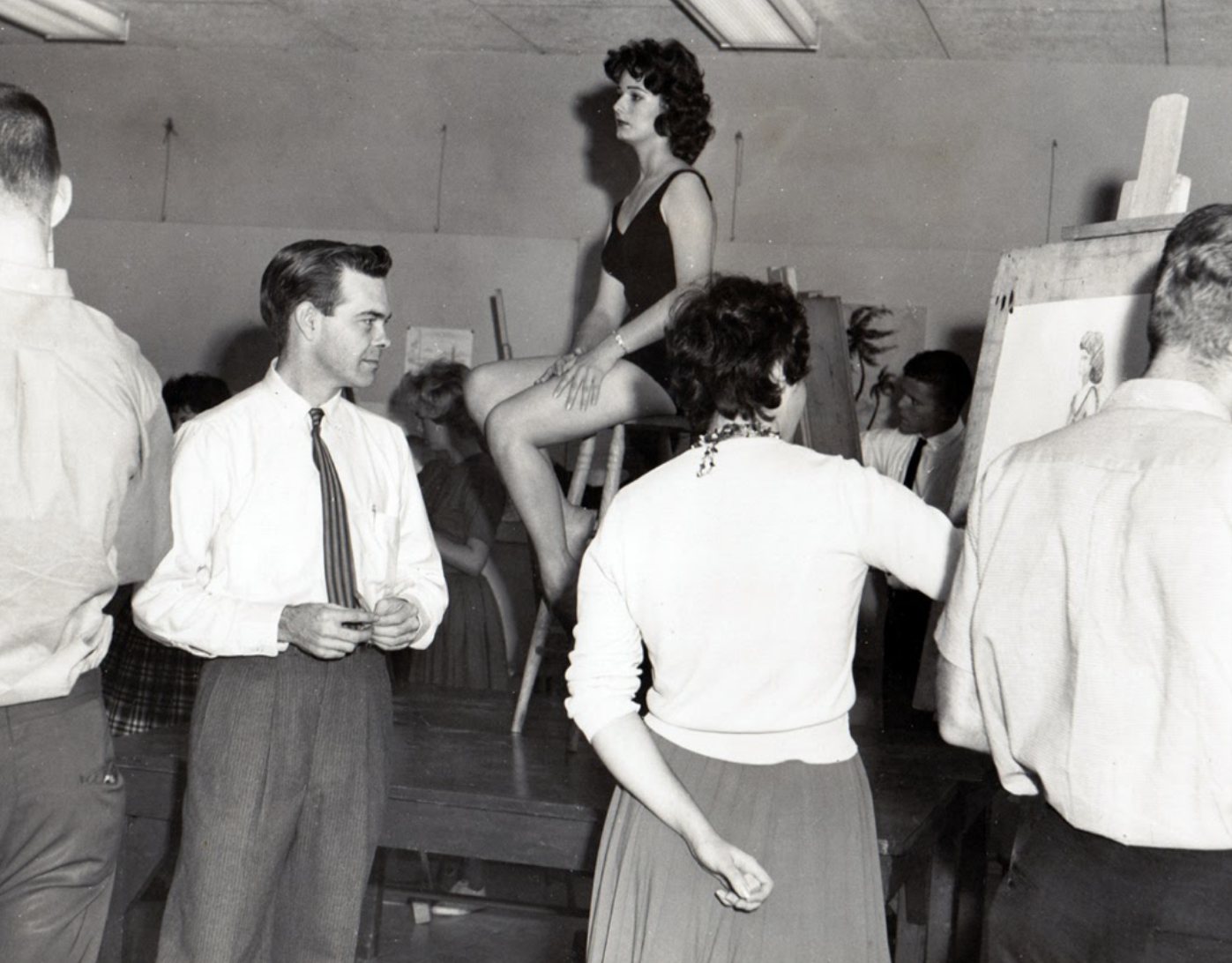
Reuben Hale teaching figure drawing 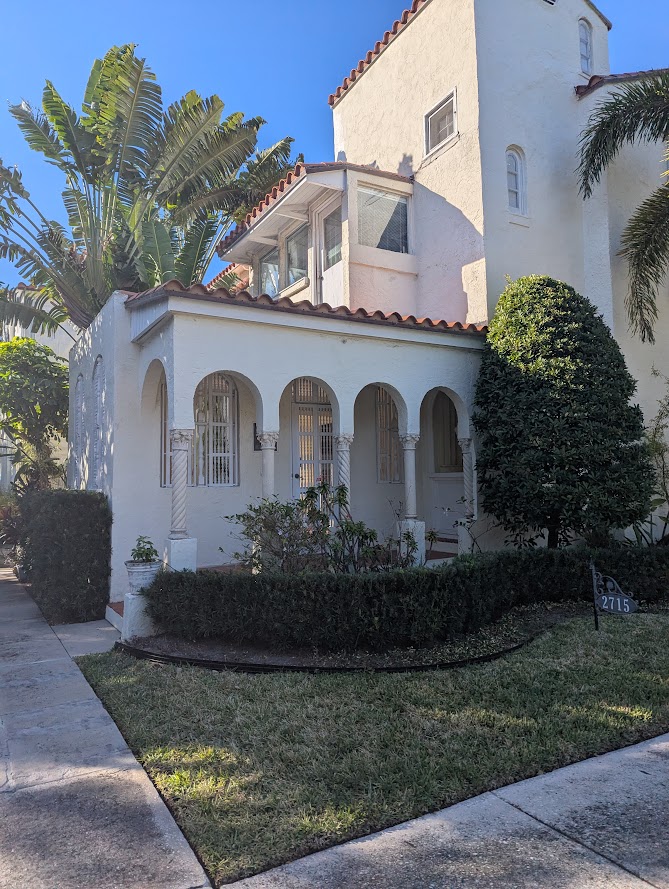
Entrance to Reuben Hale House 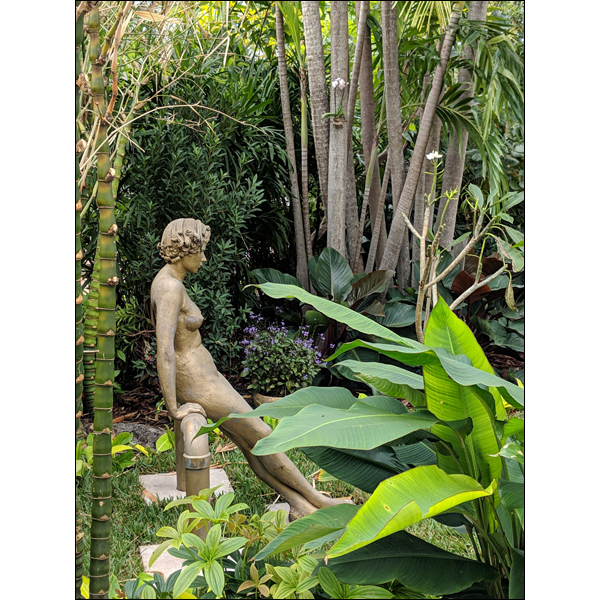
View of the garden
One year after Reuben passed away, Irma Hale together with Amy Carroll and Anne Carlisle, founded The Artwork of Reuben Hale Inc., a nonprofit dedicated to the legacy of Reuben Aldridge Hale, Jr. (1927-2018). Assisted by some of his devoted former students they have been working to preserve Hale’s 100-year-old house, garden, furnishings, and artwork.
Organizing Reuben’s 1,000+ pieces of work – portraits, abstract expressionist painting, holography, sculpture (not to mention the records of his teaching, leadership, and contributions to the community college in arts and humanities) – led to Irma to realize that not only friends and family but also researchers and the public should have access to this legacy long after she is gone.
We should start by congratulating Irma Hale for her recent achievement in gaining acceptance of the new museum as an affiliate by Historic Artists’ Homes and Studios (HAHS), a coalition of preserved sites that once were the homes and working studios of American artists. (See HAHS info below). The tireless efforts since 2019 of Irma and her little band of Reuben devotees — cataloging Reuben Hale’s artwork, developing biographical materials, and preparing the historic home, art studio and garden for visitors — have moved the foundational work forward, step-by-step. But Irma told us during our recent visit that there remains much to be done. We’re betting on her attaining her goals, given what she’s accomplished to date.
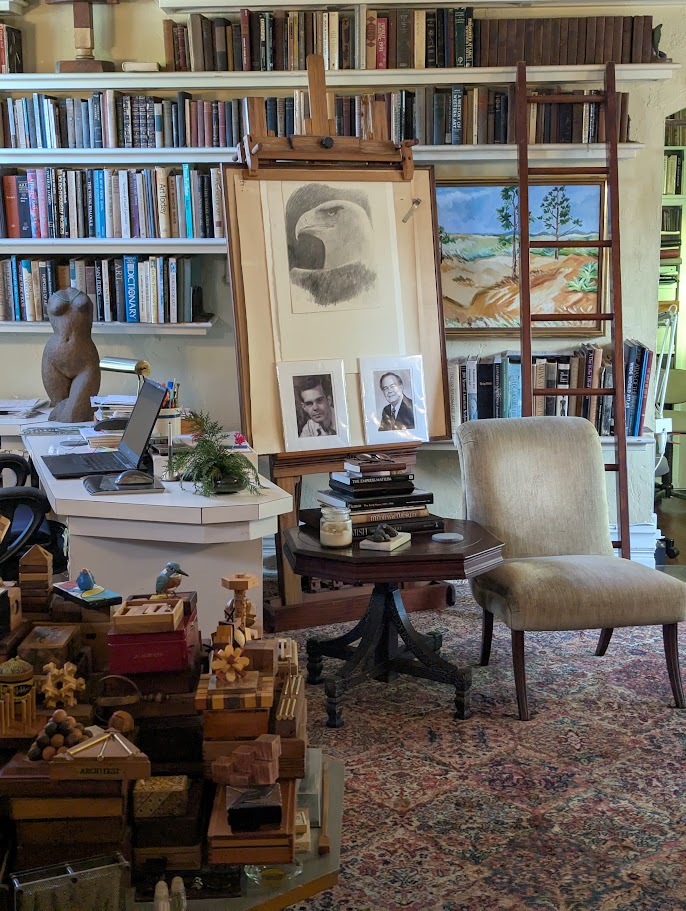
Interior view 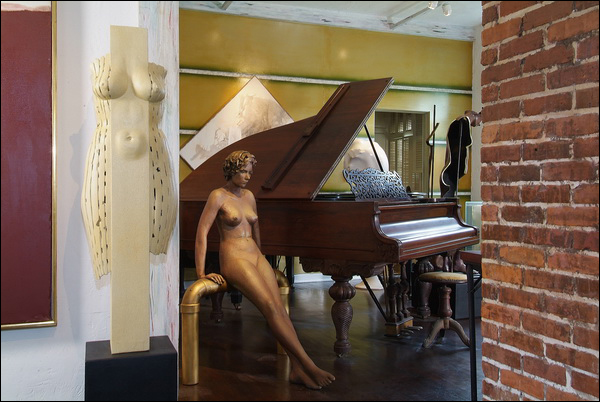
Interior view
Born in 1927 in Belzoni, Mississippi, Reuben Aldridge Hale, Jr. moved up the road a piece to Greenwood with his family a few years later. His natural artistic talent was evident from an early age. When he was 7, a teacher entered one of his drawings in an adult art competition, and it won first prize. At age12, he sculpted a bust of his father with clay he dug up at his grandmother’s house. His talent blossomed despite there being only two rather mediocre art books in the town library and extremely limited opportunities for art instruction in Greenwood.
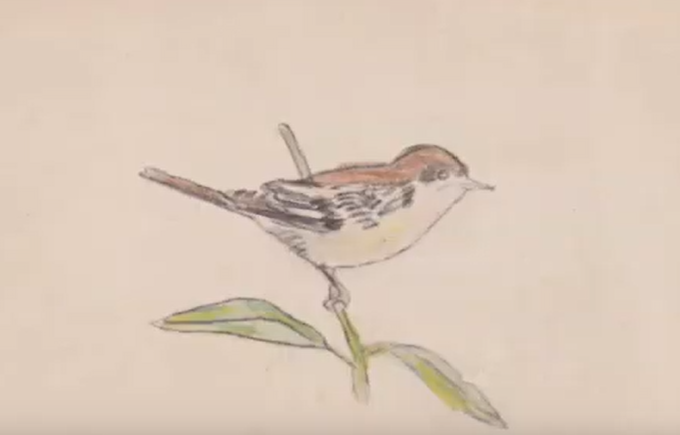
From his bird series, Age 8 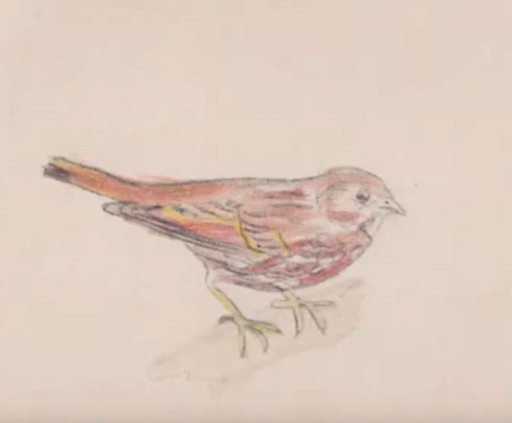
From his bird series, Age 8 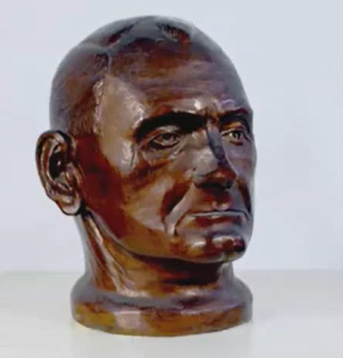
Clay bust of his father, Age 12
Following his service in World War II, Reuben enrolled at the University of Mississippi on the GI Bill, and subsequently studied at the School of the Art Institute of Chicago, where he developed a solid grounding in classical art. He returned to his hometown, married a local girl whom he had (literally) run into in Chicago where she was studying ballet. Together they set about bringing art and ballet to Greenwood, building a thriving cultural community. In addition to teaching, Reuben was in demand as as a portraitist.
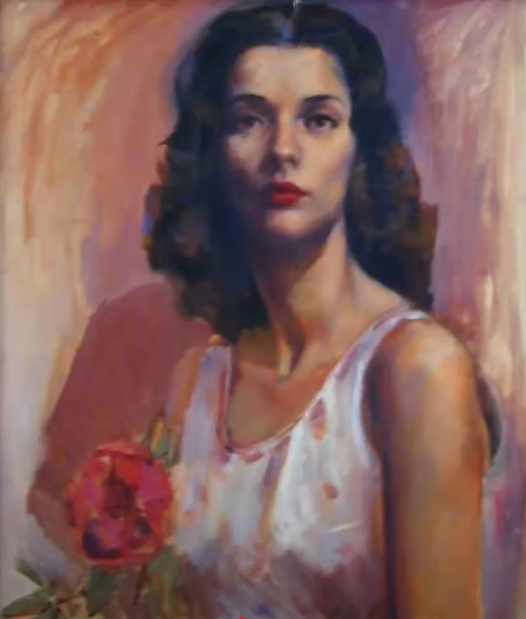
Reuben’s wife, Marie Hale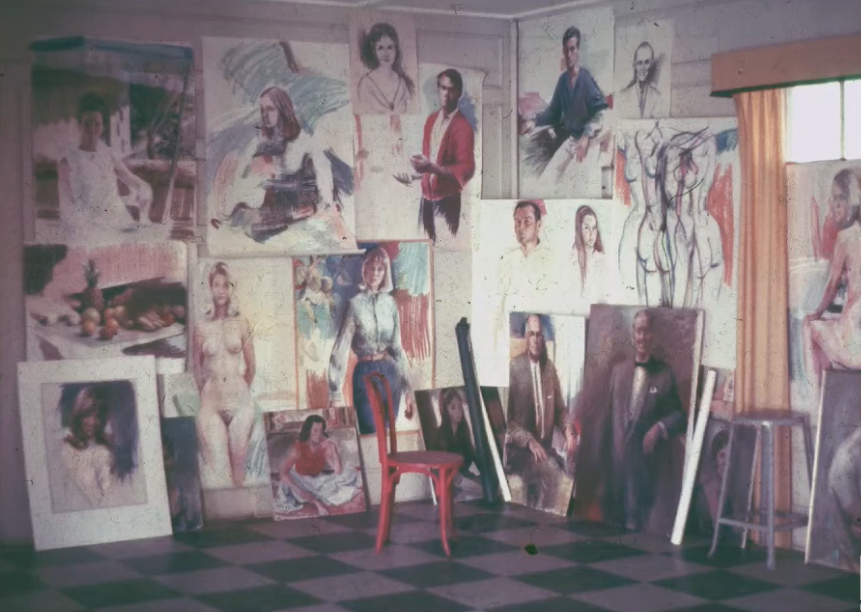
View of his portrait studio 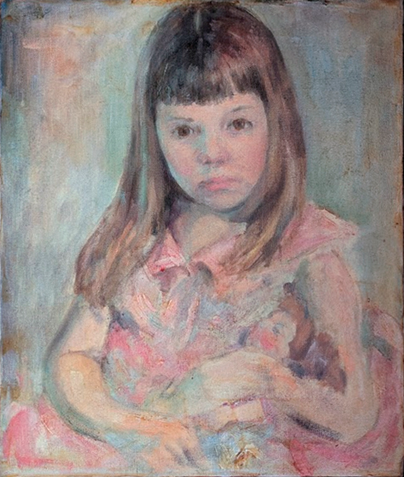
Irma Hale as a child 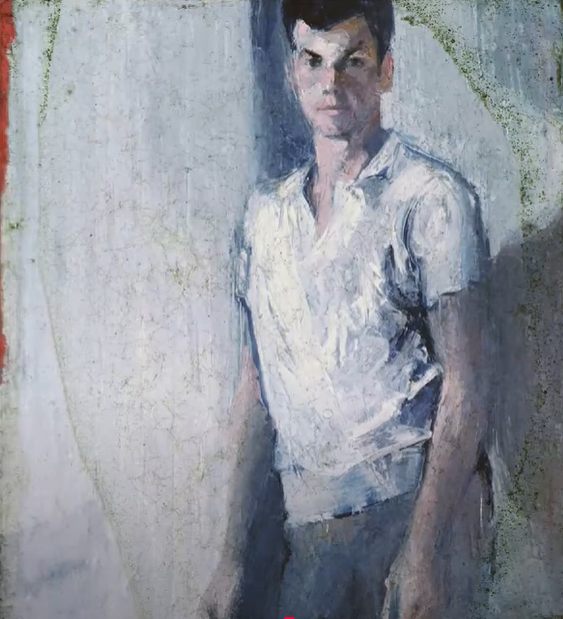
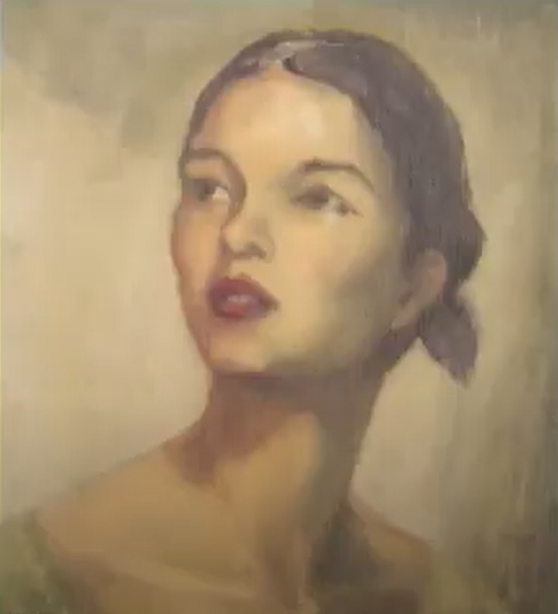
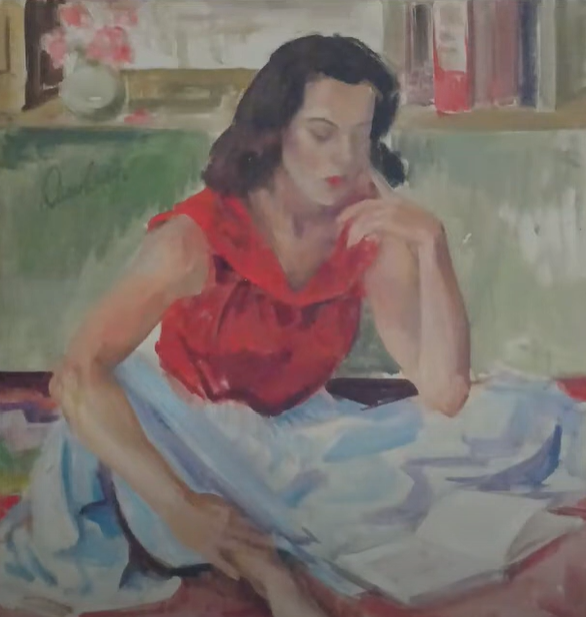
Reuben’s wife, Marie Hale
Some years later, Reuben moved his little family to Carbondale IL where he earned his Master of Fine Arts from Southern Illinois University. He later went on to study abstract expressionist painting with Hans Hofmann and Paul Burlin, and sculpture with David Slivka and Reuben Nakian. He spent time in NYC where, in the 1940s and ’50s, the art scene was dominated by a loosely affiliated group of painters who established the first truly American modernist movement (sometimes called the New York School). He hung out with the likes of de Kooning and produced a body of abstract expressionist work.
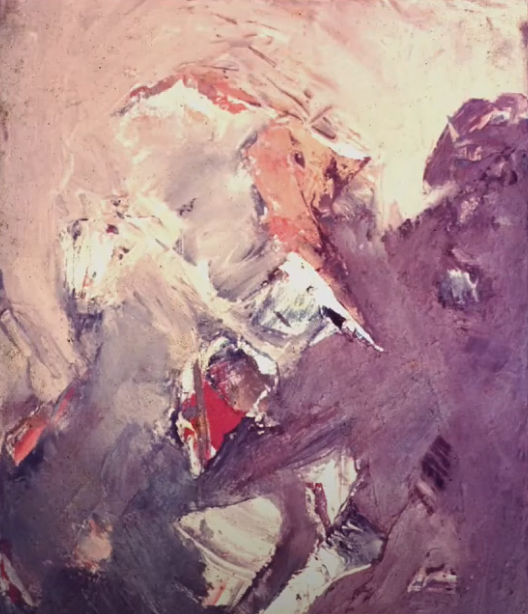
Untitled, Reuben Hale 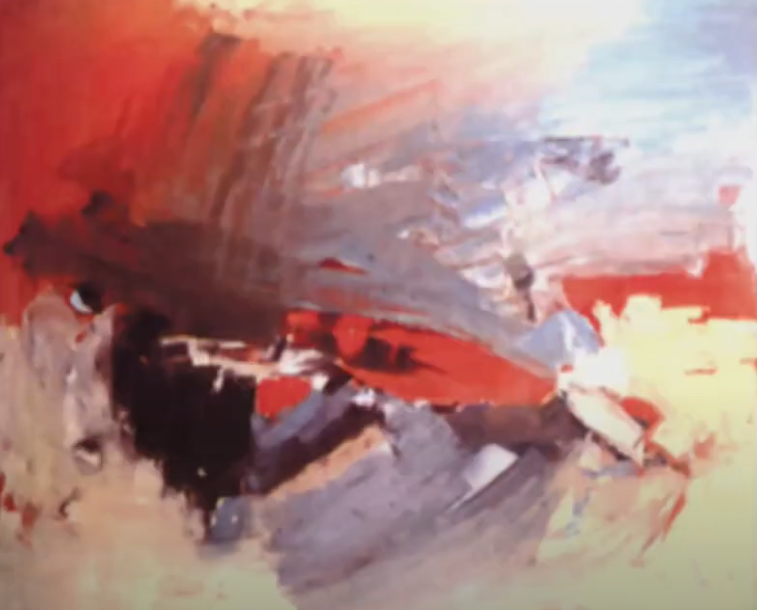
Untitled, Reuben Hale 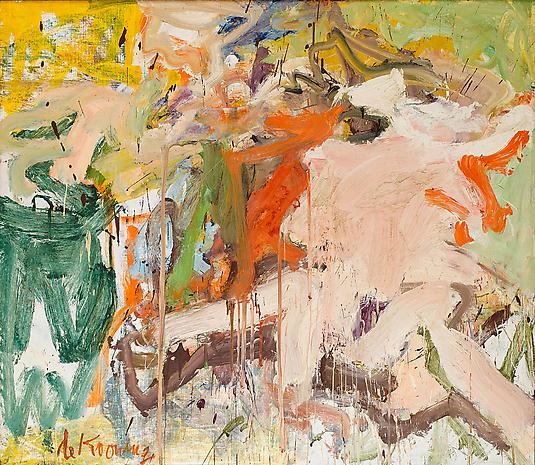
Willem de Kooning. Two Figures in a Landscape, 1967. Oil on canvas, 70 x 80 in. (177.8 x 203.2 cm). Collection Stedelijk Museum, Amsterdam.
Despite his years in the North, however, he never lost his soft-spoken Southern gentlemanliness, and his classical artistic training informed his work through out his life.
Reuben came to believe that one of the most powerful sociological developments of the 20th century was the change in status of women in society. This idea matured into the theme of emerging woman, which pervaded much of his work for three decades, beginning in the 1960s. Women emerging from a confining membrane is a recurrent image, and his female figures exude strength through confident poses and forward movement.
Touring through the Reuben Hale house with Irma was pure delight. Could there be a more enthusiastic or more knowledgeable guide than she? We think not. Irma grew up there, after all, and lives there still.
Board member Amy Carroll accompanied us and — because she’s been researching Hale’s life story — offered bits of interesting side-notes as we went along. Over here is a modification of the original floorplan, part of Reuben’s conversion of a duplex into a single-family home. There are some examples of his work in bronze, and that one is formed of polyester. And here are some pieces created using patterned glass to produce movement in a fixed object.
Everywhere the eye travels, there’s a work of art, a piece of furniture, an artifact, or a personal collection that holds a story.
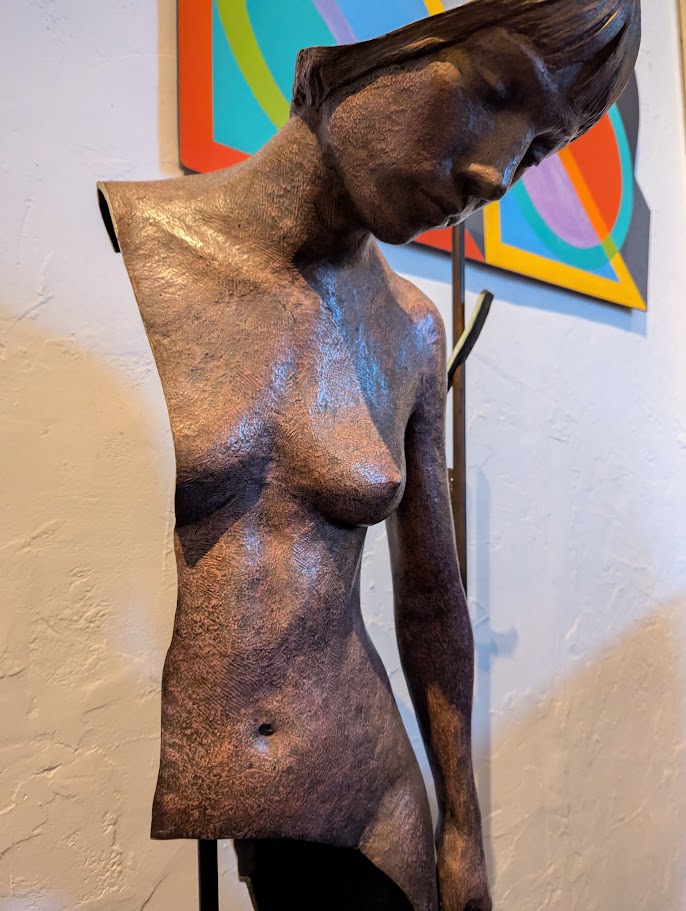
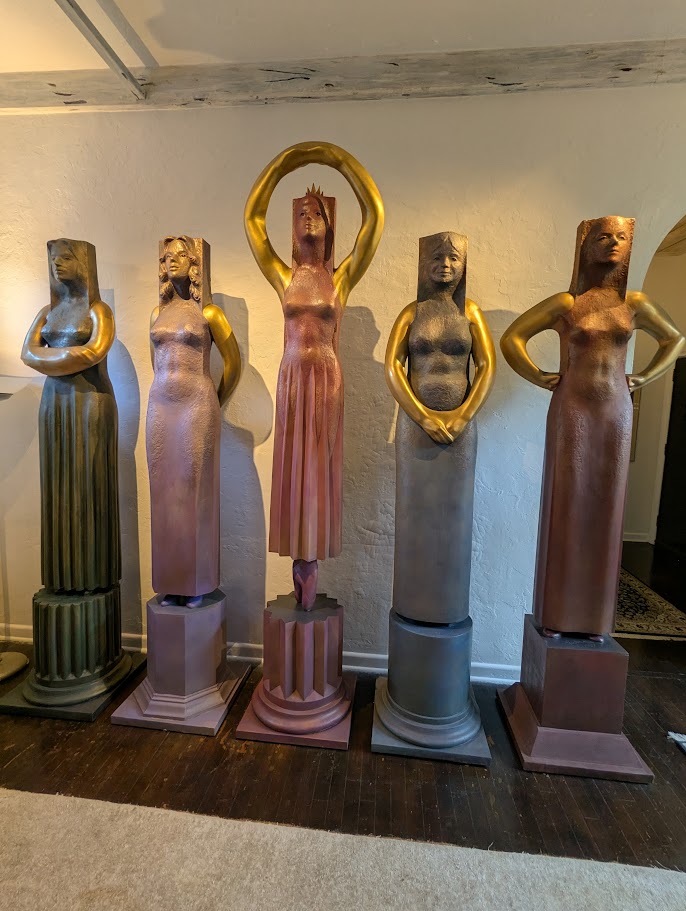
Five Caryatids 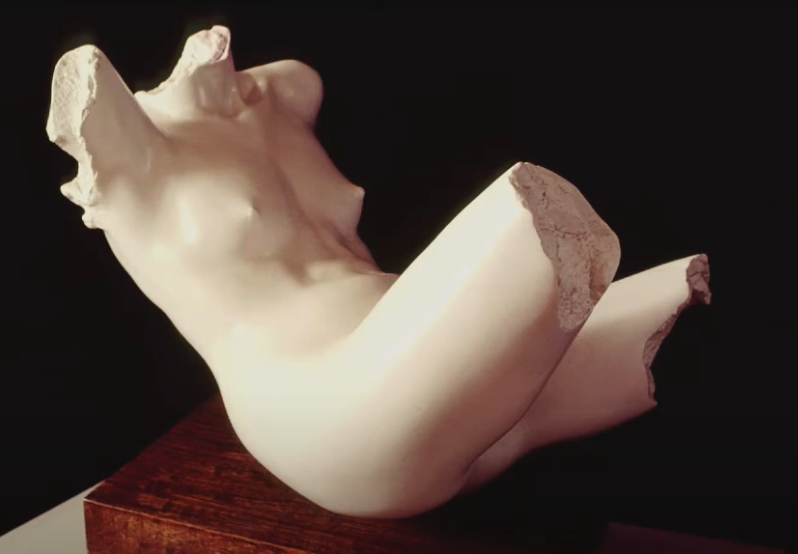
And then there’s the garden, leading from the driveway across a terrace, down a path, around a corner, through a sliver of greenery across the back of the house, to the door of Reuben’s studio. That space wasn’t yet ready for public viewing, and we didn’t learn when it might be. So another visit to WPB will be in order in a year or two, since artists’ work spaces are a special love of ours.
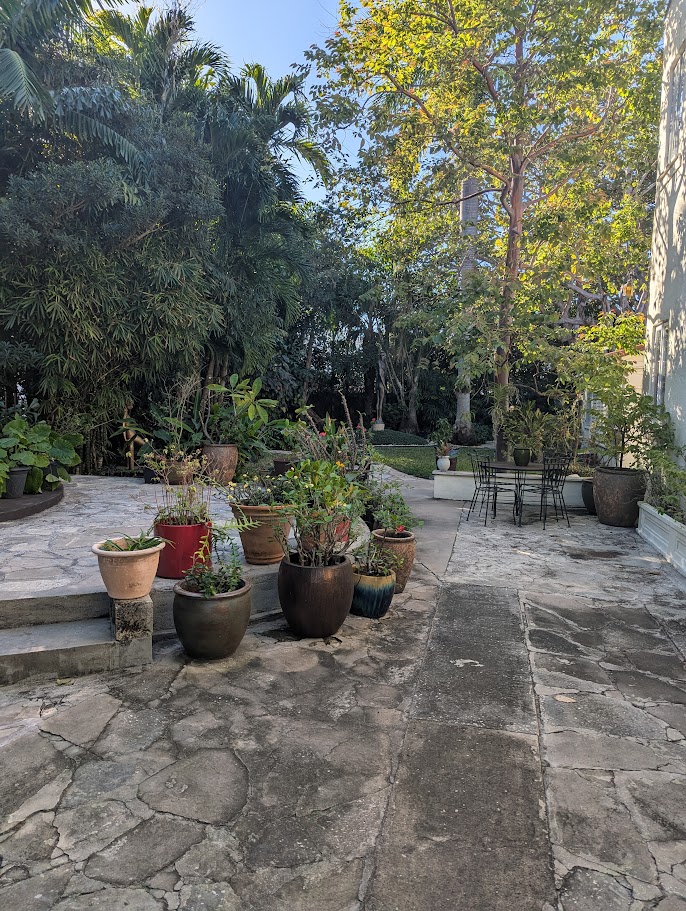
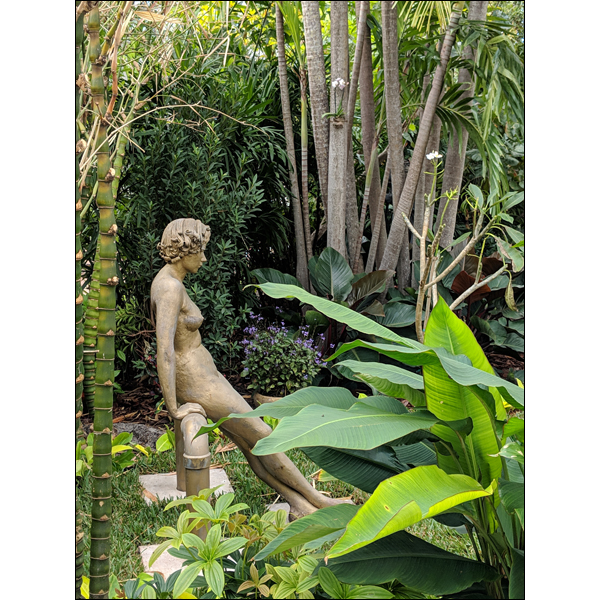
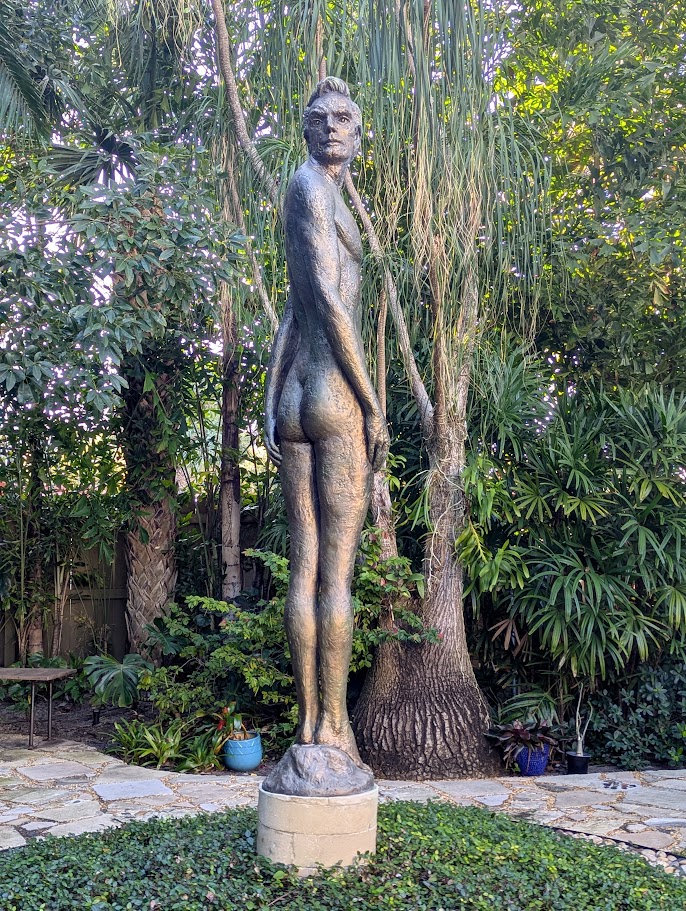
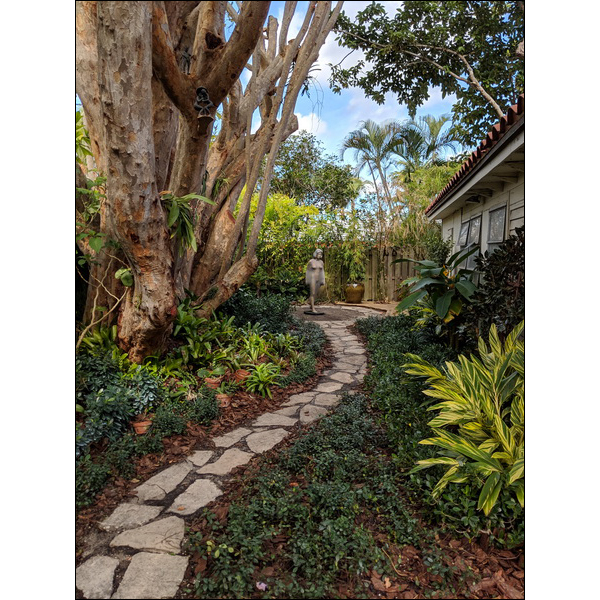
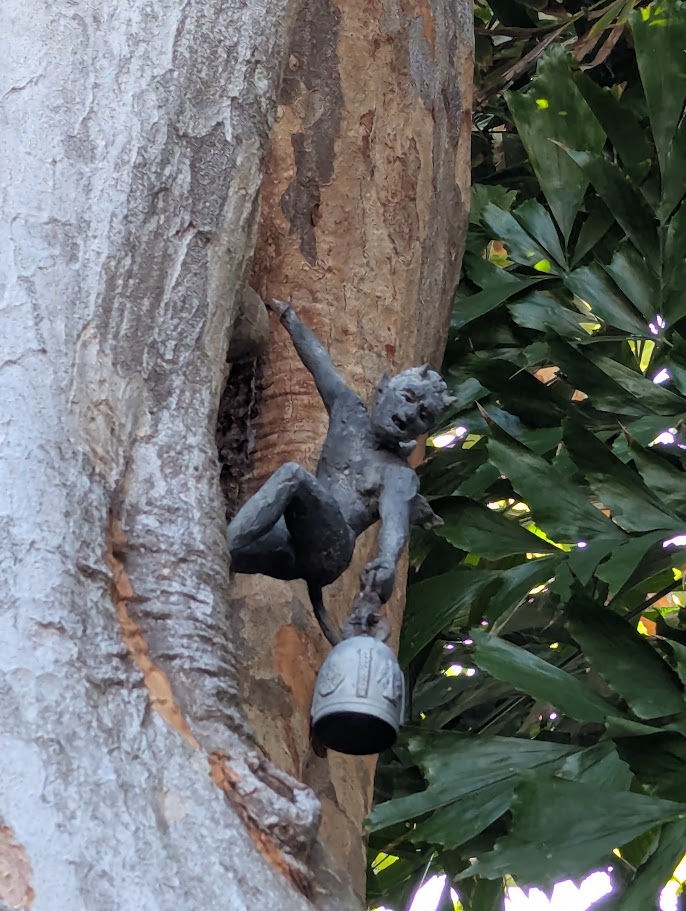
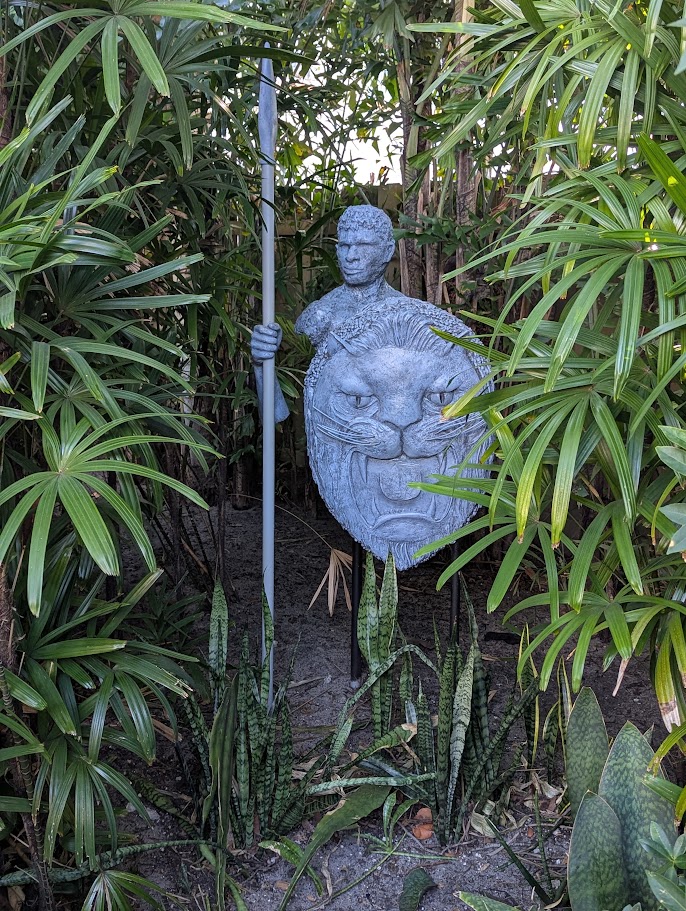
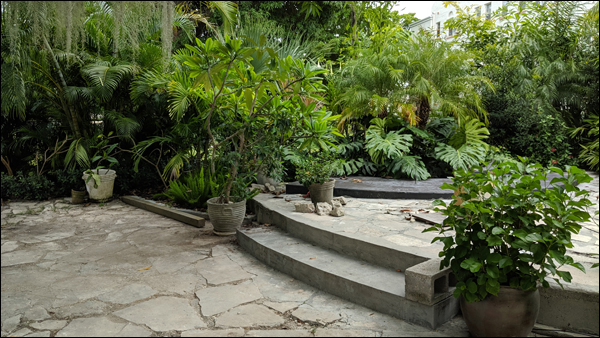
The black semi-circle, center right, will serve as the base for new resin casts of the Five Caryatids.
Irma did pop into the studio and emerged holding sections of armature to help illustrate how the sculptures were constructed. One of Reuben’s signature techniques was the use of polyester resin over wire mesh, then bronzed. As a sculpting medium, he liked the resin’s elasticity and ability to take color, and its water resistance makes it ideal for outdoor sculpture. Many of the artworks found in the garden demonstrate those advantages.
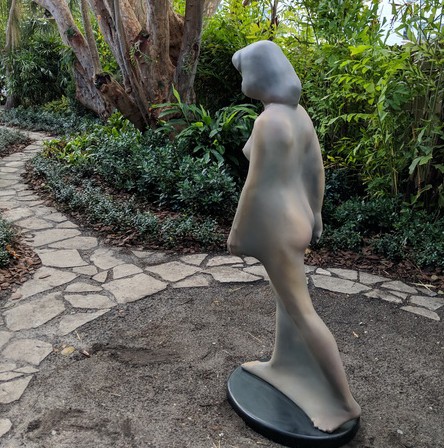
Walking Woman – Bronze – 63″ – 1990 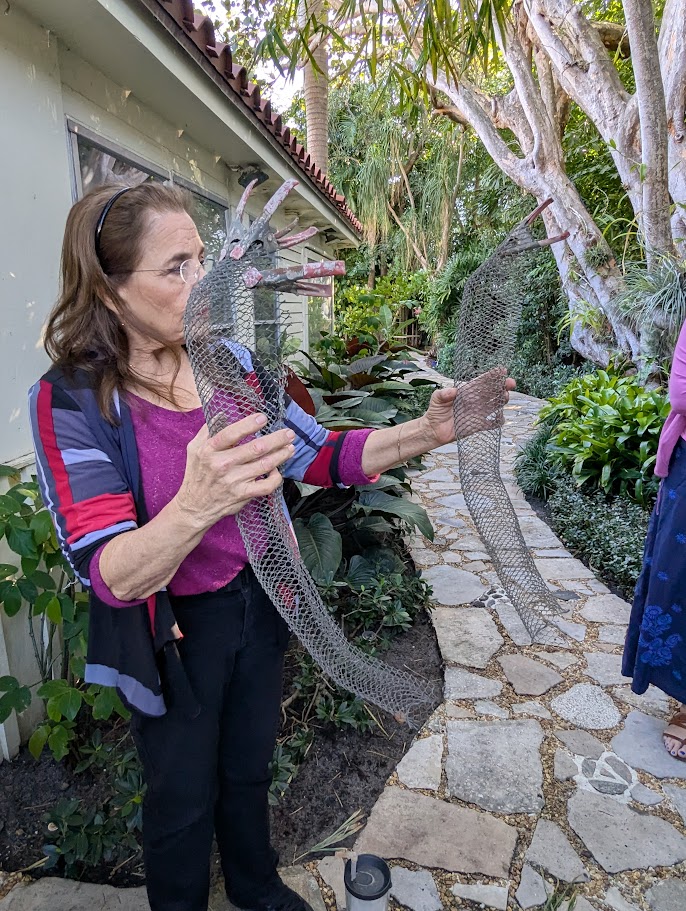
Irma Hale with armatures 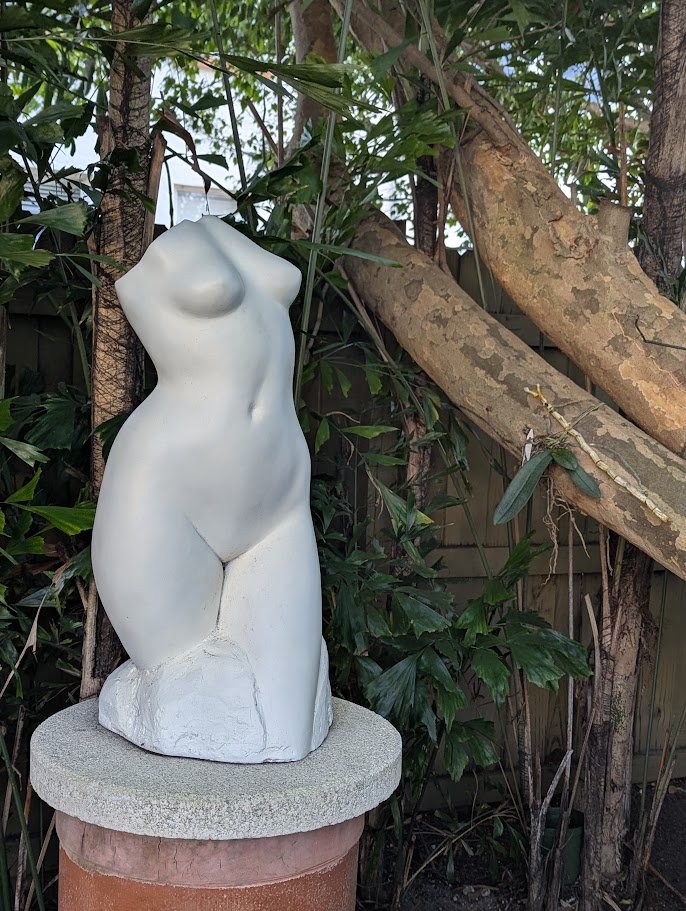
Polyester resin sculpture
In addition to sculpting in bronze and polyester, Reuben worked in wood, stone, steel and concrete, demonstrating a remarkable understanding of each medium.
A veritable 20th-century Renaissance man, Reuben had an inventive and experimental mind, non-stop energy, good humor and a love of people and life. That becomes very clear listening to Irma talk about him. But it’s clear too that she — be it through nature or nurture — is much like him. We can’t leave this without a few words about Irma Hale herself.
Just for starters: In her youth, she “ran away” to the join circus, touring as a showgirl and aerialist with the Ringling Bros. and Barnum & Bailey Circus!
In addition to being the president and founder of The Artwork of Reuben Hale, Inc., Irma is a theatrical electrician and photographer. She trained as a dancer, pianist, and physicist. Her interest in arts and sciences led to roles in stage management and lighting design with companies including Walt Disney World, New York City Opera, and the New York City Ballet. In 1999, Irma joined the U.S. Antarctic Program at McMurdo Station, working as an electrician to set up research facilities on the Antarctica ice. There she discovered a passion for outdoor photography.
Like her father, she seems inclined to master whatever she tries. But she has not greater passion, we think, than ensuring that her father’s legacy is preserved into the future.
Hmmm … maybe it’s time to plan a little trip …
Reuben Hale House & Sculpture Garden
2715 S Olive Avenue, West Palm Beach, FL
561-833-6522
Access is by Appointment only. To arrange a docent-led tour, please phone the above number or email artwork@reubenhale.com. Tours typically take 1.5 hours.
The Historic Artists’ Homes and Studios (HAHS), program of the National Trust for Historic Preservation, is dedicated to preserving and interpreting the places where art was made. The program grew out of a 1993 initiative proposed by the National Trust for Historic Preservation to reach out to those stewarding historic sites throughout the country.
HAHS is a coalition of more than 80 independent public sites. Every place in the HAHS program was the home and working studio of an American artist. Each of these places is now devoted to understanding and explaining how an artist or group of artists made their art; some sites represent an artist couple, or an art colony.
In 2022, Historic Artists’ Homes and Studios launched its new Affiliate category to complement its longstanding Membership group of sites. These Affiliate sites preserve and steward an artistic legacy while engaging with public audiences. Distinct from Member sites, they may not operate as traditional house museums or be regularly open for public visitation; some are in earlier stages of evolution as public sites. The Reuben Hale House and Sculpture Garden is an HAHS affiliate.
Art Things Considered is an art and travel blog for art geeks, brought to you by ArtGeek.art — the only search engine that makes it easy to discover 1800 art museums, historic houses & artist studios, and sculpture & botanical gardens across the US.
Just go to ArtGeek.art and enter the name of a city or state to see a comprehensive interactive listing of museums in the area. All in one place: descriptions, locations and links.
Use ArtGeek to plan trips and to discover hidden gem museums wherever you are or wherever you go in the US. It’s free, and it’s easy and fun to use!
© Arts Advantage Publishing, 2025
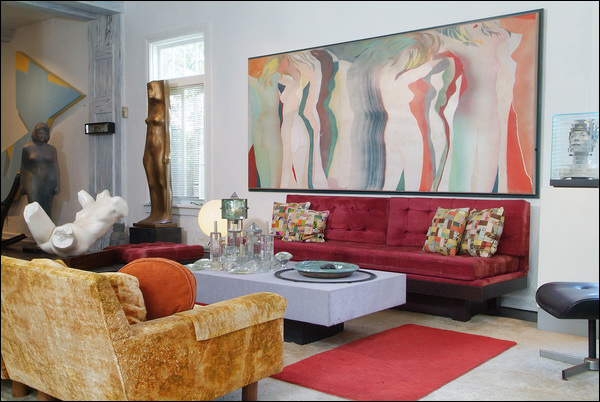
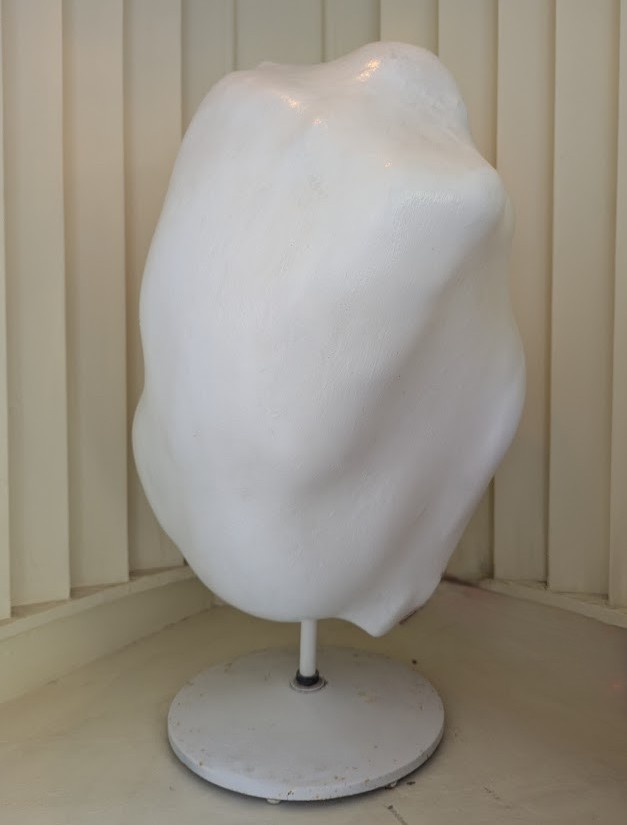
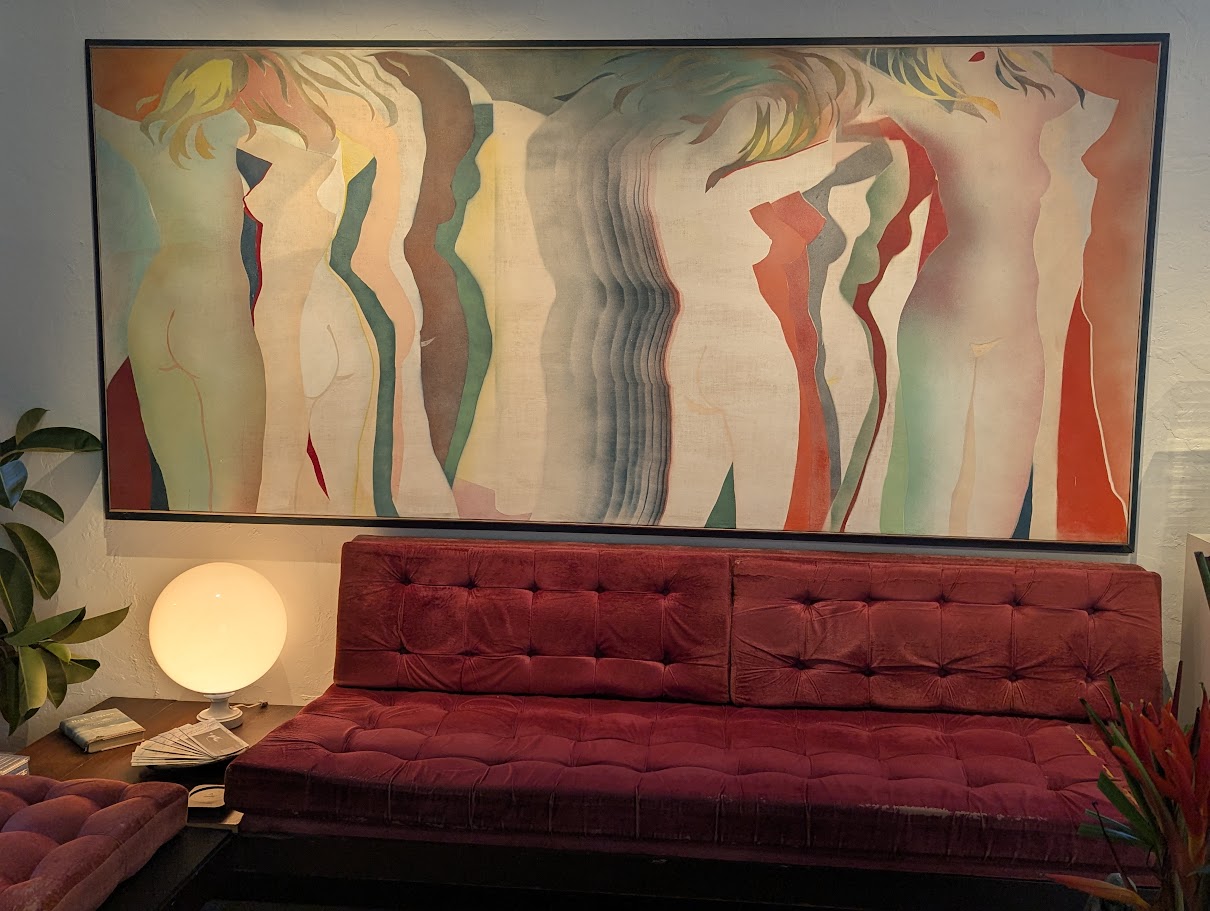
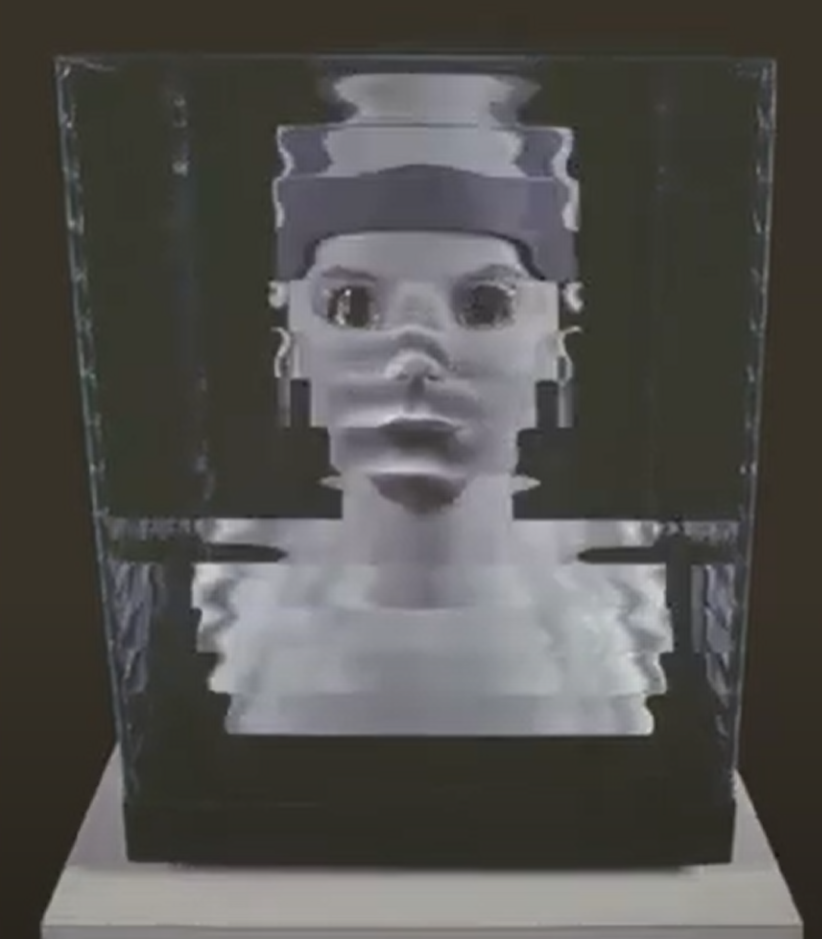
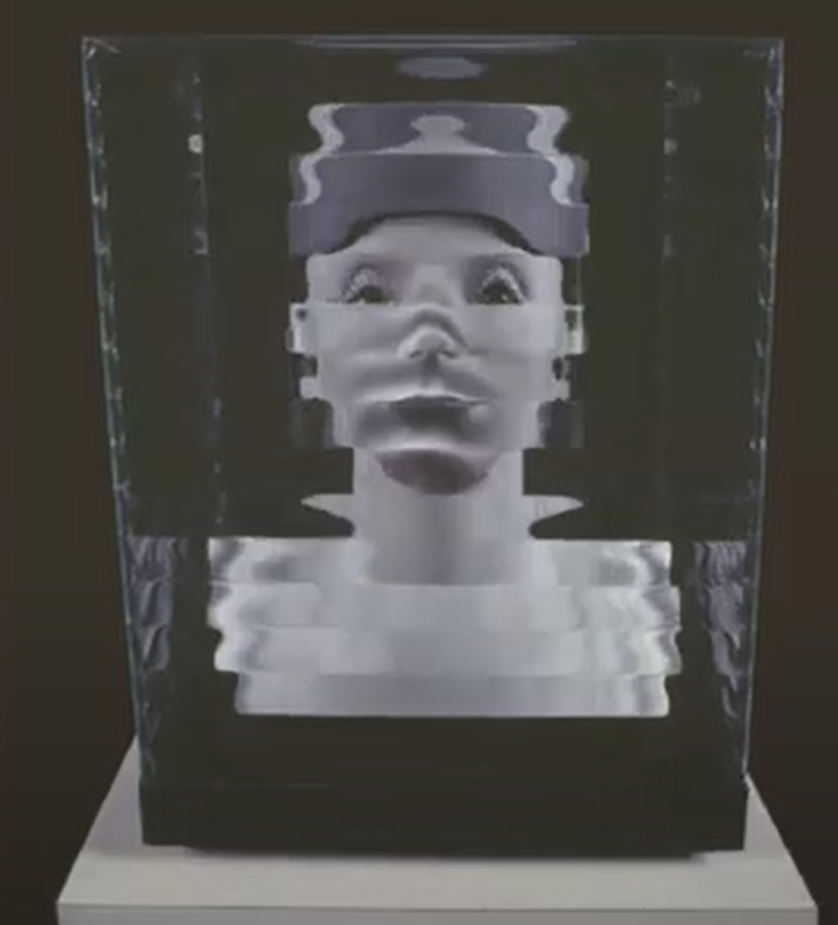
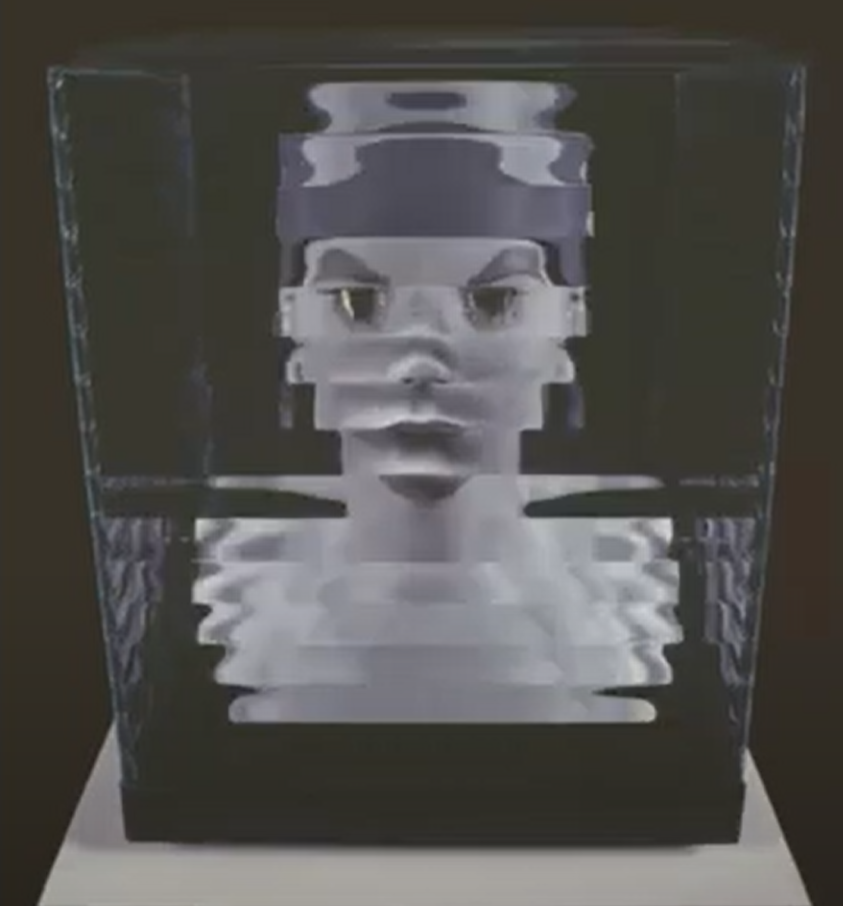
Great article and pictures. I enjoyed so much our tour of the gardens and home by Mr. Hale’s daughter Irma, who shared many interesting anecdotes concerning his life and work. I highly recommend this tour to everyone who loves art!